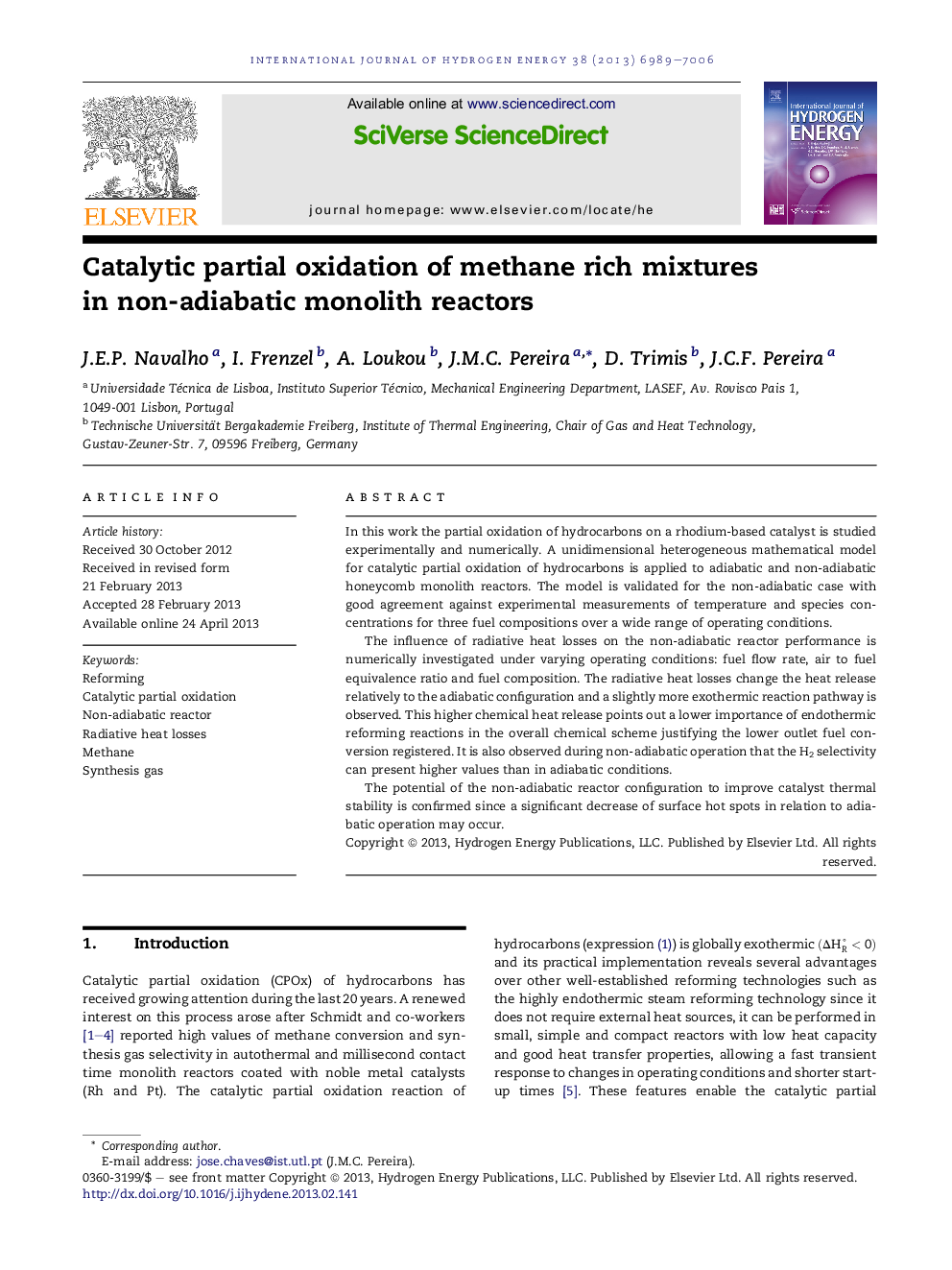| Article ID | Journal | Published Year | Pages | File Type |
|---|---|---|---|---|
| 1277483 | International Journal of Hydrogen Energy | 2013 | 18 Pages |
•A 1D heterogeneous mathematical model for CPOx was validated against new experimental data.•Three fuel samples surrogate of natural gas were considered.•The effect of operating conditions on reactor adiabaticity was investigated.•The influence of radiative heat losses on reactor performance was elucidated.•A slightly selective exothermic reaction pathway was verified in non-adiabatic conditions.
In this work the partial oxidation of hydrocarbons on a rhodium-based catalyst is studied experimentally and numerically. A unidimensional heterogeneous mathematical model for catalytic partial oxidation of hydrocarbons is applied to adiabatic and non-adiabatic honeycomb monolith reactors. The model is validated for the non-adiabatic case with good agreement against experimental measurements of temperature and species concentrations for three fuel compositions over a wide range of operating conditions.The influence of radiative heat losses on the non-adiabatic reactor performance is numerically investigated under varying operating conditions: fuel flow rate, air to fuel equivalence ratio and fuel composition. The radiative heat losses change the heat release relatively to the adiabatic configuration and a slightly more exothermic reaction pathway is observed. This higher chemical heat release points out a lower importance of endothermic reforming reactions in the overall chemical scheme justifying the lower outlet fuel conversion registered. It is also observed during non-adiabatic operation that the H2 selectivity can present higher values than in adiabatic conditions.The potential of the non-adiabatic reactor configuration to improve catalyst thermal stability is confirmed since a significant decrease of surface hot spots in relation to adiabatic operation may occur.
